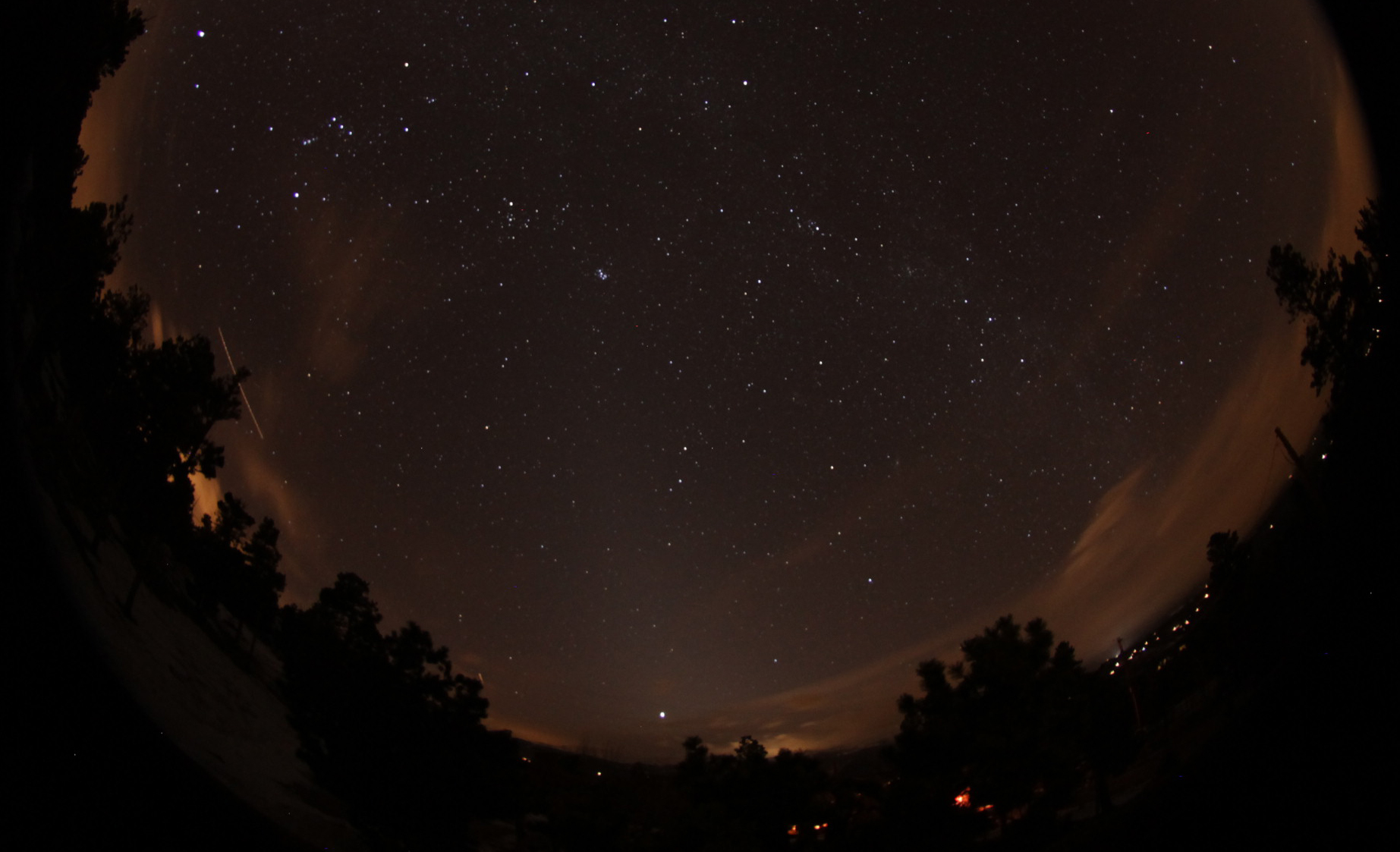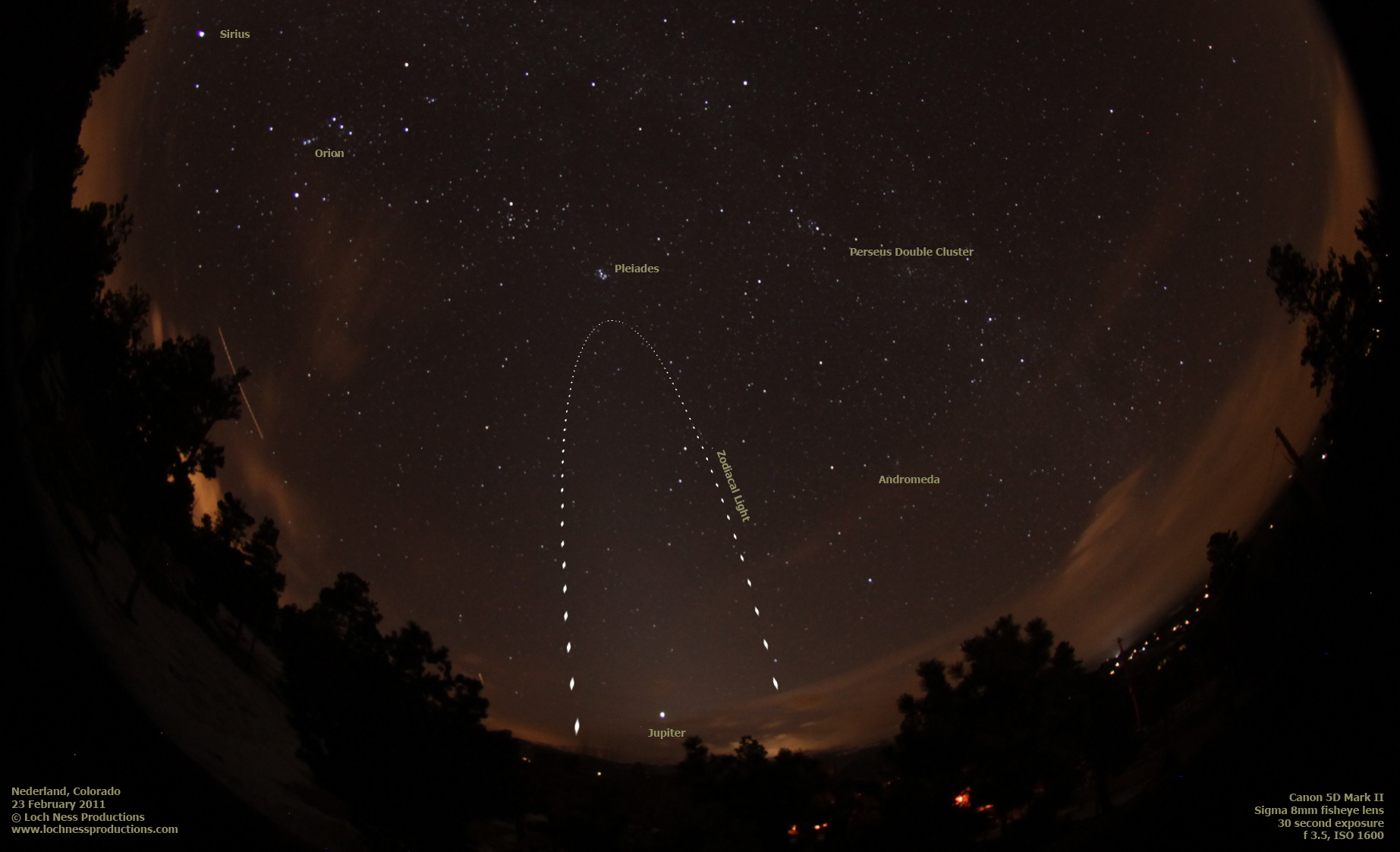The Zodiacal Light
For the past few nights, we’ve had clear weather here AND the chance to see flyovers of the International Space Station. For a couple of evenings now we’ve stepped out and watched as the astronauts flew over, and then happened to notice a faint sort of cone-shaped band of light in the west, with Jupiter embedded in the middle of it.
Here’s what it looked like. The picture below is with annotations to help you get your bearings in the sky.

What you’re looking at is sunlight scattered by dust in the zodiacal cloud — that is, a thin, rather disk-shaped cloud of dust that surrounds the Sun. It is thought that this dust comes from fragmentation of so-called “Jupiter Family Comets” — that is, comets that approach Jupiter in their orbits and take less than 20 years to go once around the Sun.
As they travel through interplanetary space, comets release very fine particles of dust that get scattered out along the path. These are thought to create that cloud. The best time to see the effect of sunlight on these dust particles is when the zodiac (that is, the plane of the ecliptic through which the planets move) is at a steep angle to the horizon. I think it’s rather neat to know that cone-shaped glow we have been seeing is the collective glow of sunlit dust particles.
If you want to try and see the zodiacal light from your location (and you have a clear view to the west after sunset), here’s an annotated version of the image above for reference. It may look brighter than what we saw, or it could be faint. The important thing is to look after sunset or before sunrise (if you happen to be up), since at those times, the Sun will be blocked by Earth, but its light can be seen glinting off the dust. Happy dust-chasing!

